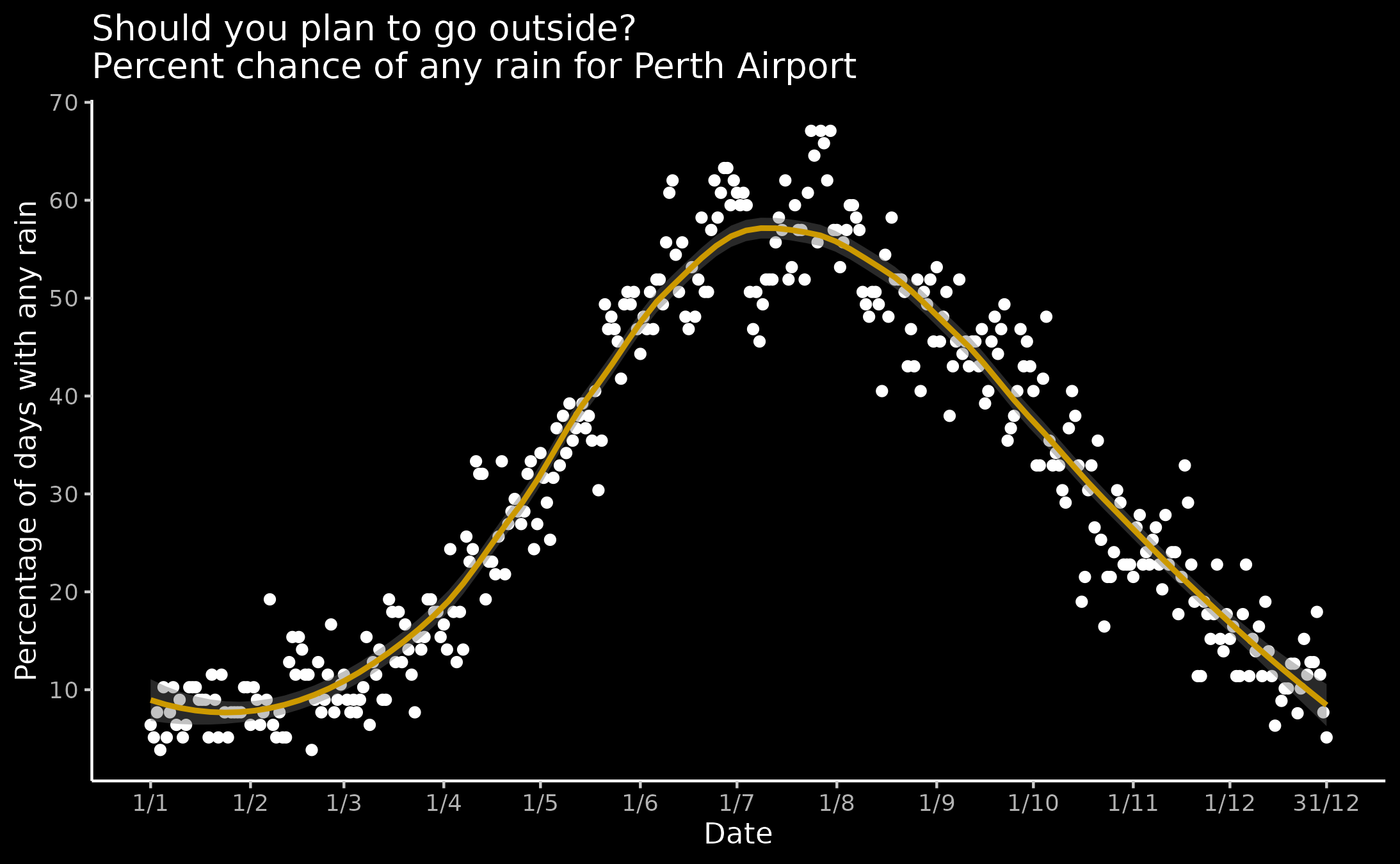⛈ Perth and surrounds rainfall and temperature analysis ☀
Having recently moved to Perth from Newcastle I am intrigued by the different weather patterns here in Perth. The most striking feature is that rainfall in Perth is *seasonal* while in Newcastle it is mostly constant year round.
So I wanted to explore the nature of rainfall in Perth. Fortunately, it is easy to get data for any Australian weather site from the Bureau of Meterology website. Unfortunately, this no longer works for some reason (the element you click to download data still has a download tag, but instead of data, it returns a zipped 403 page). Instead, I have used the NOAA hosted GHCN data for Perth Airport (which comes from the BOM anyway) which you can access here.
Documentation for the column names can be found [here](https://www.ncei.noaa.gov/pub/data/cdo/documentation/GHCND_documentation.pdf). In brief they are:
- STATION: (17 characters) is the station identification code.
- STATION_NAME: (max 50 characters) is the name of the station.
- GEOGRAPHIC_LOCATION: (31 characters) is the latitude, longitude, and elevation above mean sea level.
- DATE: is the year of the record (4 digits) followed by month (2 digits) and day (2 digits).
- PRCP: Precipitation (mm).
- SNOW: Snowfall (mm).
- SNWD: Snow depth (mm).
- TMAX: Maximum temperature (Celsius).
- TMIN: Minimum temperature (Celsius).
The data I am using in this notebook is the daily rainfall totals and temperature for Perth Airport weather station. It has been continuously monitoring rainfall since May 1944! This allows us to get a good grasp on the seasonal rainfall patterns in Perth and also what the year to year trend looks like.
Showcase graphs and summary
Probably the most striking feature of rain in Perth is just how seasonal it is. Looking at our first graph below we can see any given day in January has less than 10% chance of any rain while a given day in July has over 50% chance of any rain! The month to month change is dramatic, with the change in rainfall chance shifting rapidly in autumn and spring.
While summers are incredibly hot, and the UV index is dangerous, summer is a great time to plan outdoor activities that would be otherwise ruined by rain. In contrast, expect the opposite in winter.

Analysis notebooks
Analysis including stations around Perth
Other weather stations used
For the all stations data I have used a few more stations.